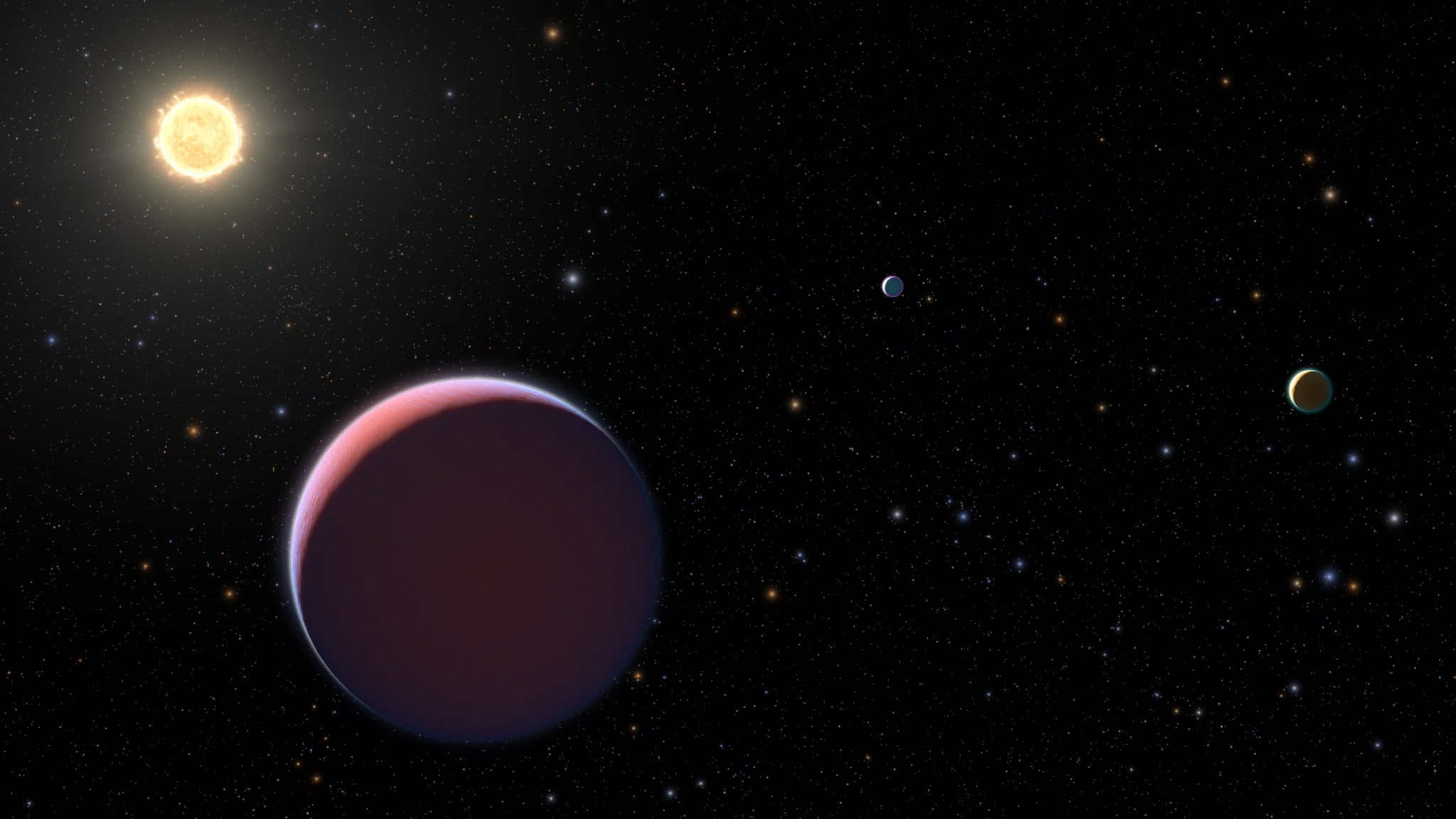
An unusual old, hot Jupiter-like planet with a “puffy” atmosphere has been discovered in our galaxy, huddled around a distant Sun-like star. This gas giant, named WASP-193b, is now the second-lightest exoplanet ever found and the latest addition to a unique and mysterious group of exoplanets with Jupiter- and Neptune-like masses but volumes much greater, dubbed as “super-puffs” or “puffy Jupiters.”
WASP-193b orbits so close to its host star that a year on the planet (one complete orbit) lasts a fleeting 6.25 days. Astronomers normally expect planets at such short distances from their stars to be long stripped of their atmospheres, due to being drenched with intense stellar radiation. Yet, telescope observations show WASP-193b to be a whopping 50 percent larger than Jupiter and a little over a tenth as heavy. In fact, the exoplanet’s air is so inflated, it can be likened to cotton candy. Additionally, this oddball planet closely grazes its star, leaving astronomers baffled as to how it’s even managed to hold onto its atmosphere over the eons.
“This planet should not be there,” says Francisco Pozuelos, a senior researcher at the Institute of Astrophysics of Andalucía in Spain, who was part of the discovery. “Right now, we have no idea” on how the supremely bloated world formed, he added.
These extraordinary features rank WASP-193b as the second-lightest planet ever found. The lightest known exoplanet is the Neptune-sized Kepler-51d, and was discovered in 2014. It is much smaller than Jupiter and 30 times less dense. Unlike Kepler-51d, which is just 500 million years old and takes over 100 days to orbit its host star, WASP-193b is nearly half as old as our universe itself. Its atypical size, ultra-light profile, and eons-long existence, make it an anomaly among the community of more than 5,000 exoplanets found to date, astronomers say.
“It’s definitely what I would call an extreme system,” says Dakotah Tyler, an astrophysicist at the University of California, Los Angeles, who was not involved with the discovery. “The normal explanation for how you get a puffed-up hot Jupiter doesn’t apply here — it’s too puffed up.”
None of the classical planetary evolution models are able to explain how WASP-193b formed, even under unrealistic assumptions such as a planet without a core, according to the new study published last week in Nature Astronomy. Astronomers hope upcoming observations of the planet reveal new clues about how such hot Jupiters coalesce and exist for billions of years within extreme environments.
A bittersweet feeling
Pozuelos and his colleagues first spotted hints of WASP-193b in telescope surveys between 2006 and 2008 by the Wide Angle Search for Planets (WASP) consortium. WASP’s robotic telescopes had detected tell-tale dips in light from the host star WASP-193, lying 1,200 light-years from Earth. Although the periodically dimming starlight suggested a planet transiting the face of its host star every 6.25 days, its ultra-light profile made it a challenge for the researchers to conclusively measure the planet’s mass.
Typically, astronomers use a technique known as the radial-velocity method, where it measures the change of a star’s normal light spectrum caused by a star’s slight wobble due to the tugging of its orbiting planets. While the gravitational pull of a massive planet on its host star is quickly noticeable — normally within a few nights — WASP-193b hardly had any influence on its star. Pozuelos and his colleagues had to collect data for four long years before they could gather a vanishingly faint mass signal, which confirmed the planet was indeed extraordinarily light.
“It was a bittersweet feeling,” recalls Pozuelos. “We’d discovered something that was an outlier and important, but at the same time we were thinking that maybe we were wrong.”
It’s not entirely uncommon for hot Jupiters like WASP-193b to host inflated atmospheres, which are primarily lightweight hydrogen and helium that easily expand when heated. Owing to the amount of stellar radiation WASP-193 is bathed in, conventional models predict planets like WASP-193b must be enveloped by a thinner atmosphere than that showed in observations. The discovery tells us that “we are ignoring the important mechanisms that we have to include somehow,” says Pozuelos. “We still have to learn a lot about how planetary systems are formed.”
“It’s really fun to find these extreme cases that make you question what you thought that you knew,” says Tyler, noting that just one eccentric planet wouldn’t upend existing theories about how planets form. “But at the same time, you do have to come up with a way to explain it.”
Pozuelos and his co-authors speculate that WASP-193b is constantly stretched and contracted by its star’s gravitational tugs, known as tidal forces. These forces could supply additional heat from deep within the planet and contribute to its inflated atmosphere. “But even that wouldn’t really account for how puffy it actually is,” says Tyler. “The key here is just more data, more observations.”
A Rosetta Stone

Pozuelos and his colleagues plan to soon request time on the James Webb Space Telescope (JWST) to study the WASP-193b’s chemical makeup. Thanks to the planet’s ultra-light air, large amounts of starlight can pierce through the atmosphere — which JWST’s powerful infrared eyes will easily be able to record.
WASP-193b “will be a Rosetta Stone to try and resolve the mystery of puffy Jupiters,” study coauthor Julien de Wit of MIT told CNN. If JWST finds WASP-193b hosting ice or elements heavier than helium (not typically expected in the interiors of a planetary system when located in an extreme environment), it would reveal that the planet moved away from the star and was pushed inward to its tight 6-day orbit by processes still being analyzed. This mechanism could also explain how Kepler-51d and its planetary siblings formed, data from the Hubble Space Telescope had previously suggested.
Pozuelos estimates his team would need just one observation by JWST to gather all the required data for WASP-193b.









